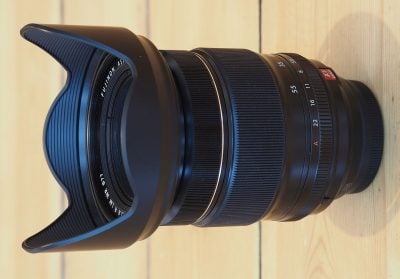Fujifilm XF 16-55mm f2.8 review
-
-
Written by Gordon Laing
In depth
The Fujinon XF 16-55mm f2.8 is a high-end general-purpose zoom lens for Fujifilm’s range of X-mount mirrorless cameras. Announced in January 2015, it’s the third standard zoom for the X series, following the XF 18-55mm f2.8-4 kit zoom and the more recent XF 18-135mm f3.5-5.6.
Mounted on an X-series body, the XF 16-55mm delivers a useful general-purpose range that starts at an equivalent of 24mm for wide-angle coverage and ends at a short telephoto equivalent of 83mm that’s ideal for details or portraits. It features a constant f2.8 focal ratio throughout the optical range and the benefit of weather-sealing, making it the ideal partner for the rugged XT1 body. It also complements the existing XF 50-140mm which shares a constant f2.8 focal ratio and weather sealing.
Strangely absent from the XF 16-55mm f2.8 though is optical stabilization, omitted to achieve the best image quality and 24mm equivalent coverage. I understand Fuji’s reasons, but the decision will inevitably turn some potential buyers towards the cheaper XF 18-55mm or the broader XF 18-135mm. There are of course other pros and cons to all three models and in my review I’ll help you make the right choice for your needs and budget. Since so many reviews will directly compare these general-purpose options, I thought I’d also include some comparisons with the ultra-wide XF 10-24mm which shares a range of focal lengths.
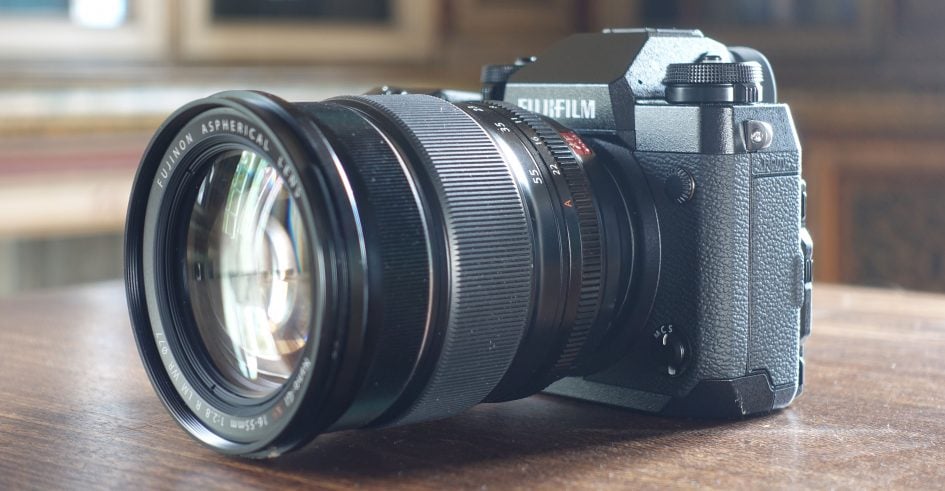
Fujifilm XF 16-55mm f2.8 design and build quality
The Fujinon XF 16-55mm f2.8 is immediately familiar as a member of the XF series of lenses, but becomes one of the heftiest models to date; indeed at the time of writing, only the XF 40-150mm f2.8 was heavier in the range. It’s not unwieldy, but it’s certainly most comfortable when paired with larger bodies, ideally the X-Pro1 or XT1, the latter pictured above.
I found it a large but mostly comfortable combination with the XT1, although the absence of optical stabilization means you may yearn for a chunkier grip to hold onto. There’s a few options available if you’d like to boost the grip on the XT1 or other models: I typically shoot my XT1 with an L bracket from PhotoMadd, again pictured above.
In terms of build quality there’s nothing to complain about: the XF 16-55mm f2.8 feels very solid and confident in your hands, and also becomes the third Fujinon lens to feature weather-sealing, following the XF 18-135mm and XF 40-150mm.
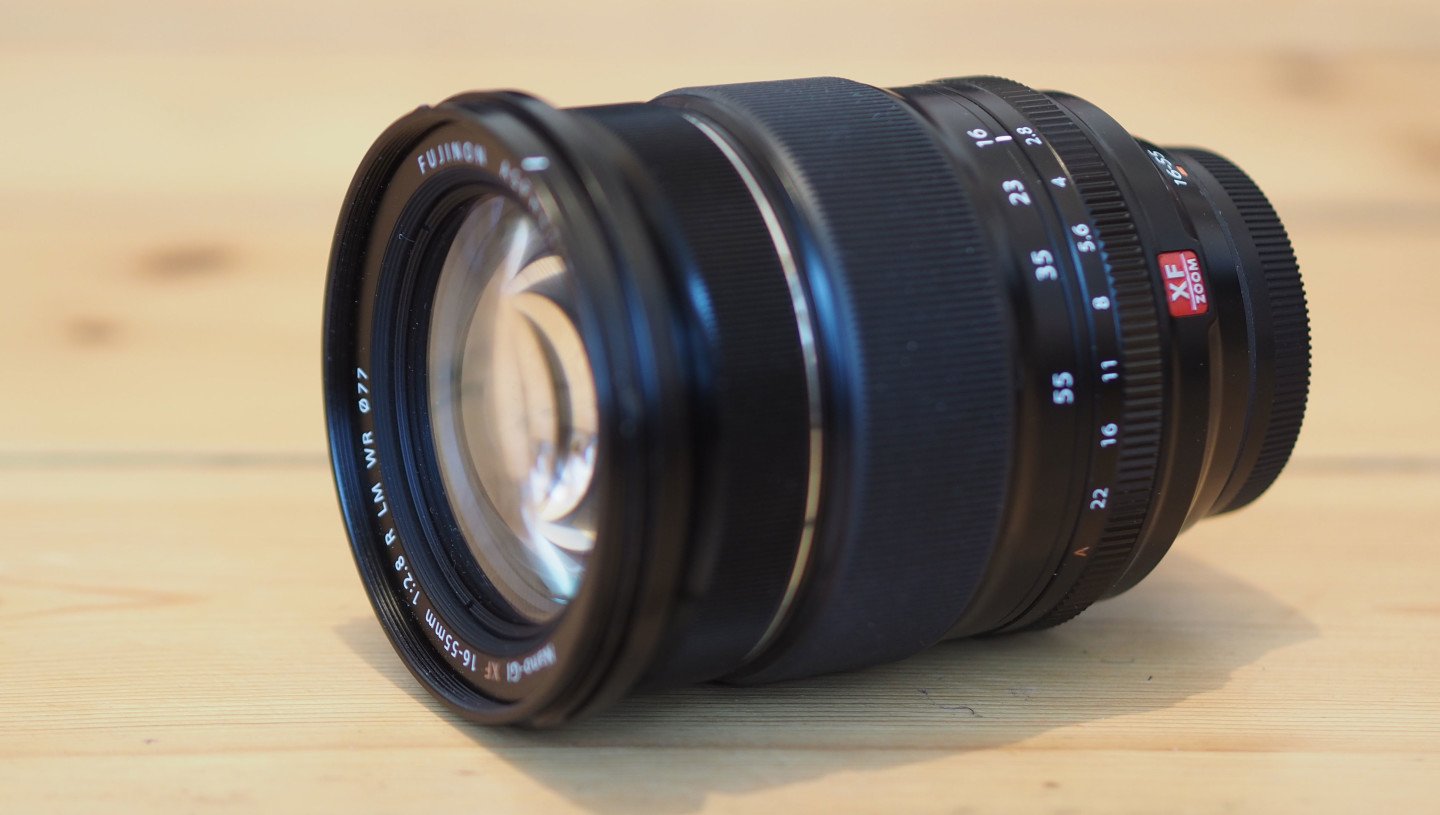
The zoom and focusing rings feel similar to other higher-end Fujinon lenses: the former is mostly smooth while the latter is damped more heavily allowing very fine adjustments to manual focus, using a focus-by-wire system. As you turn the zoom ring, the barrel fractionally retracts before extending an additional 23mm at the telephoto end.
As a high-end XF lens, the XF 16-55mm features an aperture ring with marked f-numbers and hard stops meaning it can’t rotate beyond the A and maximum f2.8 values; this is in contrast to lower-end XF lenses which employ free-wheeling, unmarked aperture rings. Finally, the lens mount is brass and at the other end, the filter thread measures 77mm and there’s a bayonet fitting for the supplied lens hood. There’s no switches on the barrel.
Okay, now for some physical comparisons. As I mentioned at the start, the XF 16-55mm f2.8 is one of the larger XF lenses, measuring 83mm in diameter, 106mm in length and weighing 655g. This makes it significantly chunkier than the XF 18-55mm f2.8-4 kit zoom, which measures 65x70mm and weighs just less than half the amount at 310g. Meanwhile the XF 18-135mm f3.5-5.6 sits inbetween the two, measuring 76x98mm and weighing 490g. For completeness, the XF 10-24mm f4 measures 78x87mm and weighs 410g. I’ve pictured the 16-55mm (below left) alongside the 10-24mm (below right).
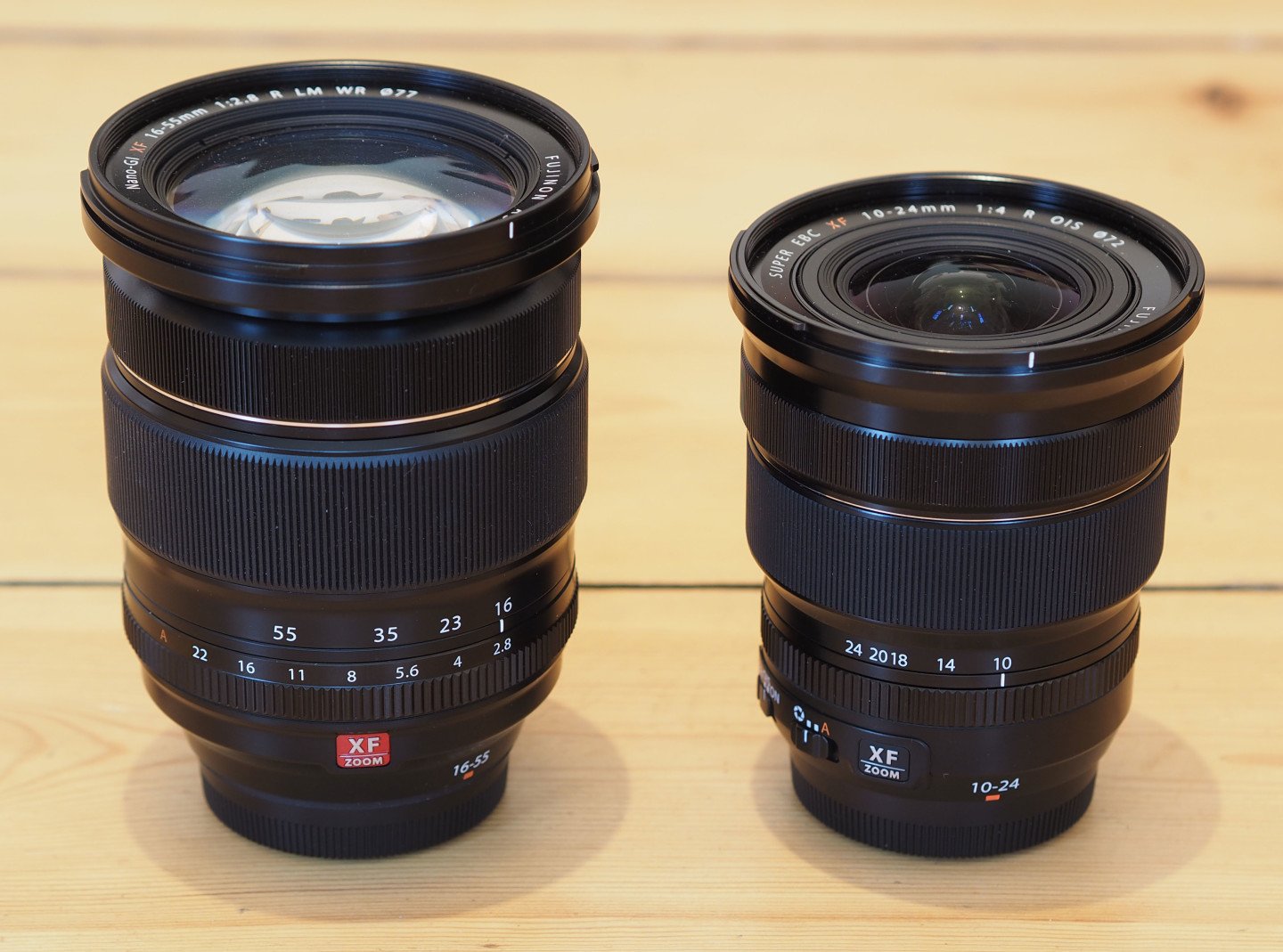
But how does it compare outside the XF system? If you’re a die-hard Fuji owner, you can skip to the next section, but if you’re interested in other systems, perhaps considering a switch, then it’s interesting to make comparisons.So of these four zooms, the XF 16-55mm f2.8 is by far the largest and heaviest, and you certainly know you’re carrying it around. Indeed I needed to reconfigure the internal walls in my small f-stop ICU to accommodate it, especially with the lens hood mounted.
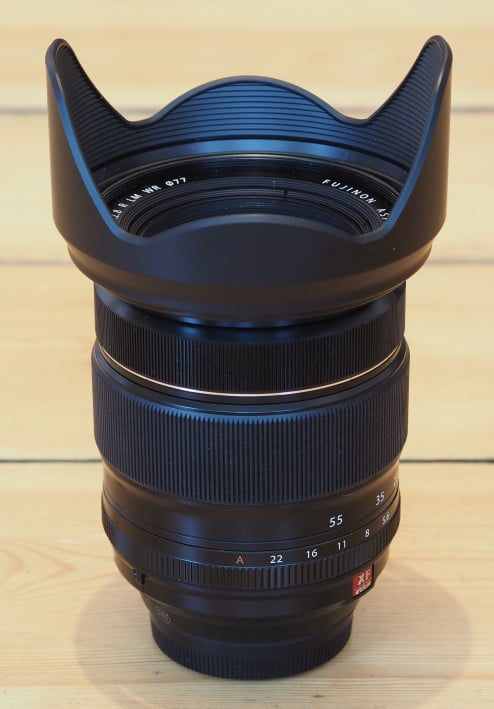
The Olympus M.Zuiko Digital 12-40mm f2.8 shares a similar equivalent coverage (24-80mm), along with the same focal ratio, a closer focusing distance (20 vs 35cm), and weather-sealing too. Measuring 70x84mm and weighing 382g though, the Olympus lens is comfortably smaller and almost half the weight, keeping more in-line with the mirrorless concept of greater portability. While the f2.8 focal ratio means they’ll share the same exposures under the same light though, there are differences in their effective depth-of-field. In full-frame depth-of-field terms, the Olympus and Fuji lenses are roughly equivalent to shooting at f5.6 and f4 respectively, allowing the latter to deliver a shallower depth-of-field effect when both are set to the same focal ratio.
So a fairer comparison would be with a similar lens for an APS-C system, such as Canon’s EF-S 17-55mm f2.8. Measuring 84x111mm, weighing 645g and having a 77mm filter thread, the Canon lens is remarkably similar to the Fujinon, and both will deliver essentially the same exposures and depth of field too. There are however key differences in specification: the Canon is optically-stabilised while the Fuji is weather-sealed, has nine aperture blades versus seven, and zooms wider to 24mm equivalent versus 27mm.
When faced with the absence of optical stabilization, Fuji prefers to compare the XF 16-55mm f2.8 against its full-frame equivalents, citing the Canon and Nikkor 24-70mm f2.8 lenses, neither of which sport stabilization either. Taking the EF 24-70mm f2.8L II USM, the Canon is slightly larger at 89x113mm and heavier too at 805g, while additionally requiring bigger 82mm filters. But remember this is a full-frame lens that’s not only corrected for a much bigger sensor, but which will also deliver a shallower depth of field at the same focal ratio and equivalent focal length.
In terms of equivalent depth of field, it may be fairer to compare the XF 16-55mm f2.8 against the Canon EF 24-70mm f4 which shares similar vital statistics of 83x93mm, 600g and a 77mm filter thread. It’s one stop slower in terms of exposure, but roughly equivalent in terms of effective depth of field. Oh yes, and the Canon EF 24-70mm f4 also has optical stabilization.
So in terms of the competition, I’d say the XF 16-55mm f2.8 is roughly similar in size and weight to comparable models. It’s certainly not blazing a trail of miniaturization, nor employing a revolutionary optical construction. The hope then is that the focus has been on delivering excellent quality, and I’ll be examining that in just a moment.
Fujifilm XF 16-55mm f2.8 optical construction
The Fujinon XF 16-55mm f2.8 delivers a general purpose range that’s equivalent to 24-83mm, making it ideal as a walk-around lens. At the wide-end you’ll be able to capture big landscapes and decent interiors, while at the long end you’ll get nice portraits or close to details. Here’s how the coverage looks on Brighton’s seafront.

Above: Fujifilm XF 16-55mm at 16mm (left) and 55mm (right)
Fujifilm offers three XF zooms with general-purpose ranges. The latest XF 16-55mm f2.8 joins the existing XF 18-135mm f3.5-5.6 and XF 18-55mm f2.8-4 zooms. Obviously the 16-55mm zooms a wider than the other two with 24mm equivalent coverage versus 27mm; it doesn’t sound like much but it does give it a useful edge when faced with large subjects or tight corners. Meanwhile at the long-end, it matches the 18-55mm kit zoom, but both fall short of the 18-135mm which extends around two and a half times longer to an equivalent of 203mm.
The perfect range is a very personal thing, but for me I’d sooner have the wider 24mm equivalent coverage of the 16-55mm and carry a second lens for longer telephoto reach if necessary. But there’s more than just range to decide between them.
Of the three lenses, the 16-55mm is optically the brightest with a constant f2.8 focal ratio. The 18-55mm matches this when zoomed-wide, but slows by one stop to f4 by the time it reaches the long-end. Meanwhile the 18-135mm starts slower at f3.5 and ends two whole stops slower at f5.6. Having a bright and constant f2.8 focal ratio allows you to maintain lower ISOs or higher shutter speeds with the 16-55mm than the other two lenses, and also allows you to more easily deliver a shallow depth-of-field effect. Here’s some examples of the blurring you can expect to achieve in practice – it’s obviously not as much as an even brighter prime, the XF 56mm f1.2 springing to mind – but it may still be sufficient for your needs.

Above: Fujifilm XF 16-55mm f2.8 at 55mm f2.8

Above: Fujifilm XF 16-55mm f2.8 at 55mm f2.8
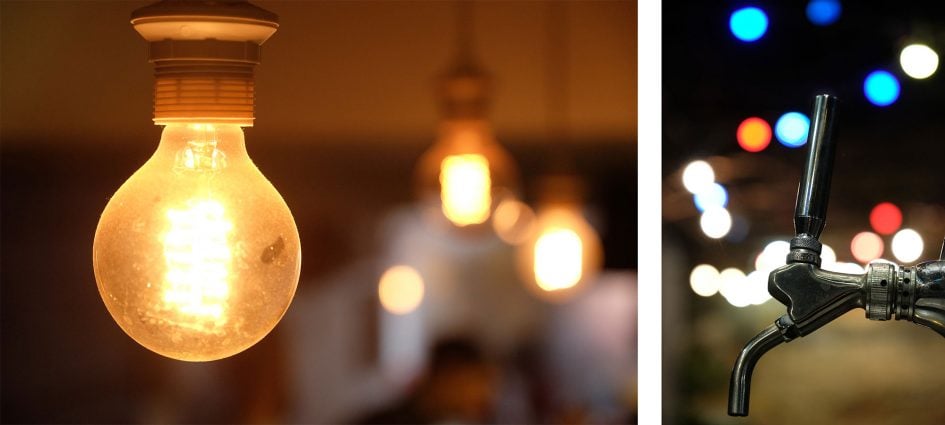
Above: Fujifilm XF 16-55mm f2.8 at 55mm f2.8
For the maximum blurring, you’ll want to get close to your subject, and the XF 16-55mm will focus as close as 30cm from the focal plane; that’s the same as the 18-55mm and closer than the 45cm of the 18-135mm. So like most general-purpose zooms, none of them are great for macro work, but as you can see in my examples here (close to or at the minimum distance), you can still capture some smaller details. As a quick aside, a closest focusing distance of 30-40cm is par for the course with most rivals from other systems although the Olympus 12-40mm f2.8 manages to focus down to 20cm.
The XF 16-55mm also employs nine aperture blades compared to seven for the 18-55mm and 18-135mm, not to mention the 10-24mm, allowing it to deliver smoother circular out-of-focus shapes as you close the aperture. Here’s two shots taken at the maximum aperture with the lens set to 16mm, then 55mm. Judging from the out-of-focus areas in the shots below and above, I’d say the 16-55mm is fairly well-behaved when it comes to rendering with mostly smooth transitions. Unsurprisingly for the optical construction, specular highlights can suffer from a little onion-ringing, and there’s also evidence of a little of the cats-eye effect where circles become squashed into ovals in the corners, but overall it’s not bad for a bright zoom.

Above left: XF 16-55mm at 16mm f2.8. Above right: XF 16-55mm at 55mm f2.8
At this point in my reviews I’d normally test the optical stabilization of a lens, but as you already know, the XF 16-55mm doesn’t offer it. I asked Fujifilm why it was omitted; here’s the reply in full. “There is a trade off relationship between OIS and image quality. Because of this, we have focused our attention to the quality aspect of the images. We can see that both the Nikon and Canon full frame equivalents do not support OIS and although the Canon APS-C does support it, the focal range has had to change to 27mm to allow this.”
So optical stabilization was omitted on grounds of optical quality and in order to deliver 24mm equivalent coverage. Fujifilm also feels justified because neither the Canon or Nikon 24-70mm f2.8 lenses are optically stabilized, although as noted earlier in my review, these are full-frame models that can deliver a shallower depth of field at the same equivalent focal length. To me they’re not really equivalent lenses. Canon’s EF-S 17-55mm f2.8 is a closer match, although while it does have optical stabilization, it doesn’t zoom as wide.
We can compare specs all day long, but the proof of the pudding is in the eating. The quality of the XF 16-55mm f2.8 is certainly very good and I’ve gone into great detail across my results pages. But how much would it have been compromised with the addition of optical stabilization, and would 24mm coverage really not have been possible? After all Canon also has the EF 24-70mm f4 lens with stabilization for full-frame bodies, and while it’s optically a stop slower, the effective depth of field when mounted on a full-frame body is similar.
I can tell you this much: I really did miss not having stabilisation when shooting with the XF 16-55mm. I’ve grown so accustomed to a perfectly still image when composing that it was a bit of a shock to see my image wobbling on-screen or in the viewfinder, and of course I had to ensure I was shooting at appropriately faster shutter speeds to avoid any camera shake.
This makes the XF 16-55mm a bitter-sweet choice for me. I desire the quality and 24mm coverage, but I also want optical stabilization in a general-purpose lens. It’s at times like these that I love the Olympus system which builds stabilization into the body so that all lenses effectively become stabilized.
Ultimately it’s a choice that only you can make. Luckily there are two optically stabilized general-purpose zooms in the range if you need them, but of course neither zooms out to 24mm nor boasts the optical speed or quality of the 16-55mm.
In terms of optical construction, the XF 16-55mm f2.8 employs 17 elements in 12 groups; three elements are aspherical and another three are extra low dispersion. This makes it the most complex of the three general-purpose Fujifilm zooms, although the 18-135mm is close behind with 16 elements in 12 groups.
Focusing takes place internally and is swift and quiet. Mounted on the XT1, I experienced no issues focusing even in low light. Once again my biggest issue optically concerns the lack of stabilization.
Fujifilm XF 16-55mm f2.8 Image quality
For the rest of this page I’d like to pick out a selection of images I shot with the lens on an X-H1 body to illustrate its flexibility and also pick-up on other aspects of its performance. All shots are JPEGs straight out of the cameras with no modification – you can download any of them – and many more – from my sample images page.










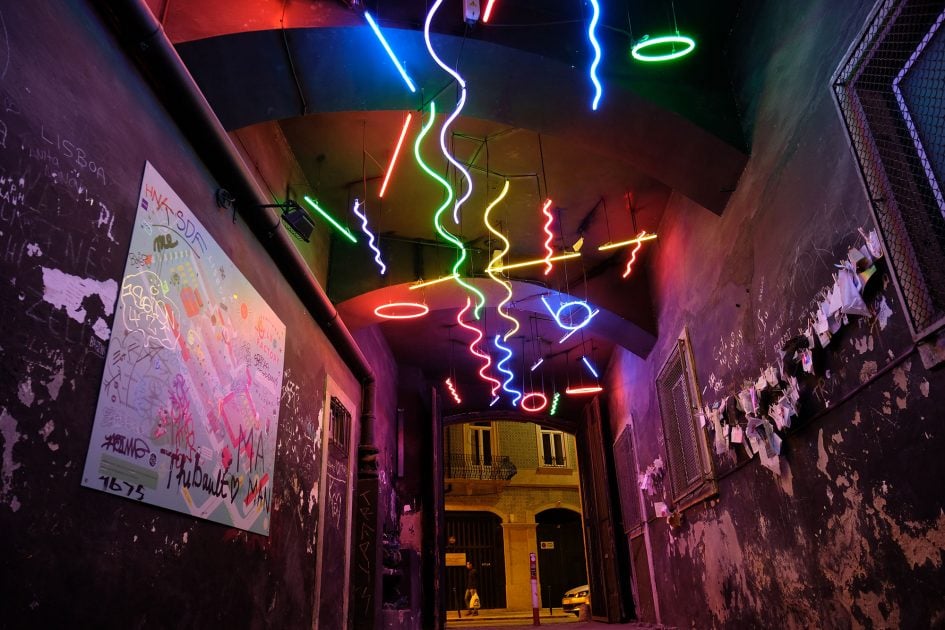



[geot country="US"]Buy the Fujifilm XF 16-55mm f2.8 from amazon.com[/geot][geot region="UK"]Buy the Fujifilm XF 16-55mm f2.8 from amazon.co.uk[/geot][geot region="Germany"]Buy the Fujifilm XF 16-55mm f2.8 from amazon.de[/geot][geot region="France"]Buy the Fujifilm XF 16-55mm f2.8 from amazon.fr[/geot][geot region="Spain"]Buy the Fujifilm XF 16-55mm f2.8 from amazon.es[/geot][geot country="Italy"]Buy the Fujifilm XF 16-55mm f2.8 from amazon.it[/geot][geot country="Canada"]Buy the Fujifilm XF 16-55mm f2.8 from amazon.ca[/geot][geot exclude_region="UK,Germany, France,Spain" exclude_country="Italy,Canada,US"]Buy the Fujifilm XF 16-55mm f2.8 from eBay[/geot], B&H, or Adorama. Alternatively you could treat me to a coffee!
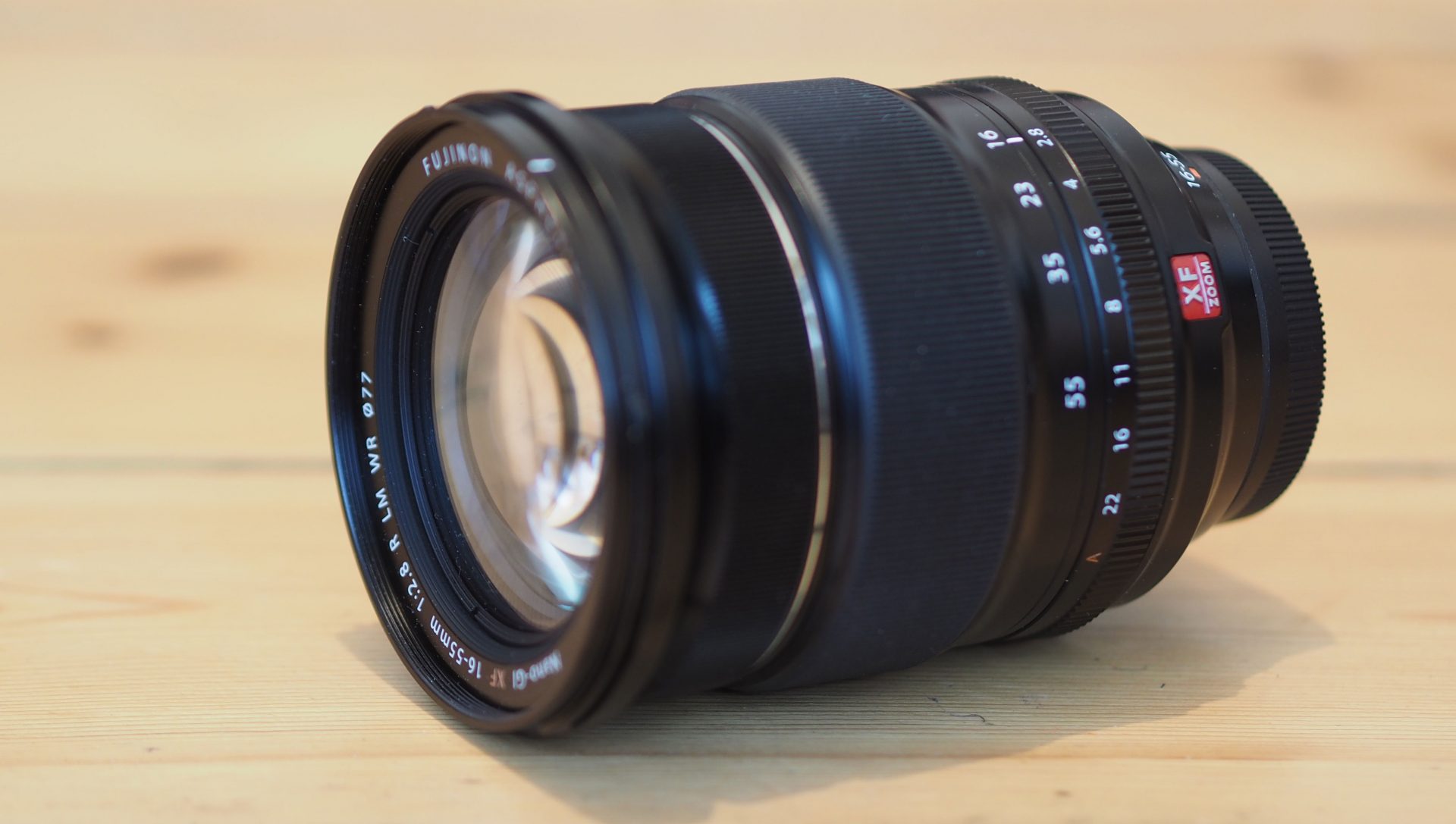
 Fujifilm's XF 16-55mm f2.8 is a high quality general-purpose zoom for the company's series of X-mount bodies. It delivers a useful walkaround range equivalent to 24-83mm and a constant f2.8 focal ratio, not to mention weather-sealing. It's an unashamedly high-end lens aimed at pros who'll love to couple it with the XF 50-140mm f2.8. It's a shame there's no optical stabilisation on the XF 16-55mm f2.8, but the performance could still swing-it for many.
Fujifilm's XF 16-55mm f2.8 is a high quality general-purpose zoom for the company's series of X-mount bodies. It delivers a useful walkaround range equivalent to 24-83mm and a constant f2.8 focal ratio, not to mention weather-sealing. It's an unashamedly high-end lens aimed at pros who'll love to couple it with the XF 50-140mm f2.8. It's a shame there's no optical stabilisation on the XF 16-55mm f2.8, but the performance could still swing-it for many.



